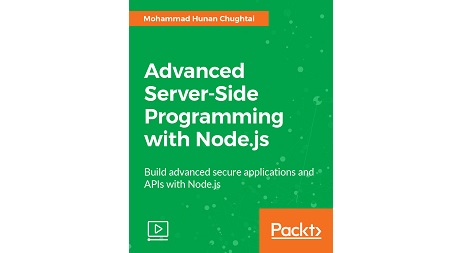
English | MP4 | AVC 1920×1080 | AAC 48KHz 2ch | 3h 07m | 702 MB
Build advanced, secure applications and APIs with Node.js and take your full-stack to the next level with third-party modules
Node.js is a powerful, performance-efficient language. Its non-IO blocking technology makes it perfect for creating highly scalable web applications built around user interaction.
In this course, you will learn to create highly secure and scalable applications using various languages and frameworks such as EJS, PassportJS, OAuth (for user authentication with Facebook, Twitter and more), the Helmet module, and encryption with BCrypt. You will also learn about the MVC architecture to make sure your codebase is maintainable and scalable, making you a better developer overall.
This course is for you if you have a basic understanding of Node.js and want to take your web applications to the next level in security and scalability by learning in-demand skills.
The course begins with an in-depth explanation of how Node.js works to help viewers become better developers overall, then it discusses security and efficient coding with Node.js, ultimately leading to viewers learning to code performance-efficient, quality web applications using frameworks and technologies such as BCrypt, EJS, OAuth, PassportJS, and more.
What You Will Learn
- Learn how Node.js’ non-IO blocking technology works in depth
- Get familiar with the MVC architecture
- Create authentication patterns using PassportJS
- Encrypt sensitive user data to protect your data from malware attacks
- Use OAuth to set up Facebook, Twitter, and social-media logins
- Learn how to use templating engines, and make powerful dynamic applications using EJS
- Protect your application and users against common threats and learn to use the Helmet module
- Build a performance-efficient, dynamic web blog using what you’ve learned
Table of Contents
Advanced Node.js Introduction
1 The Course Overview
2 Structuring Our Application with MVC Architecture and Git
3 Mongoose – Introduction to MongoDB Object Modelling
4 Mongoose – CRUD Operations and Express Review
Template Engines
5 What is Templating and EJS
6 Sending Data From Our Server-Side
7 Looping Through Data and Conditional Rendering with EJS
8 Include Tag with EJS
Authentication
9 Introduction to OAuth
10 Setting up Routes for Facebook Authentication
11 Setting up a Facebook Strategy with the Passport Module
12 Setting up Sessions and Testing Our Facebook Logins
13 Setting up Local Users Using Mongoose and Sessions
Secure Coding with Node.js
14 Introduction to Encrypting Sensitive Data
15 Encrypting User Passwords
16 Confirming Our Newly Encrypted Passwords
Creating a Secure Web Blog
17 Project Setup
18 Creating the Database Schemas
19 Creating Local Authentication
20 Creating Facebook Authentication
21 Creating a Search and Dashboard Page
22 Creating a Profile and Settings Layout
23 Setting up Nodemailer to Send Email Notifications
24 Deploying Our Application to Heroku
Resolve the captcha to access the links!